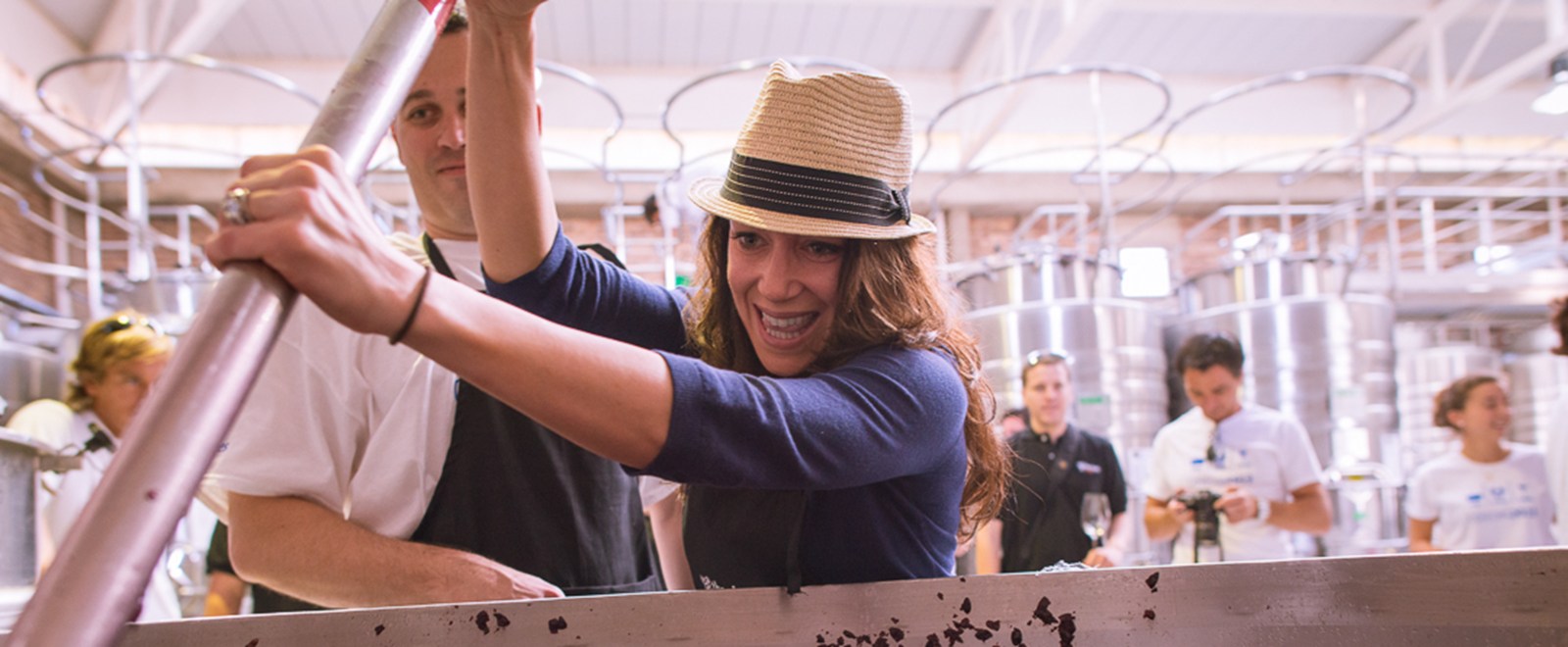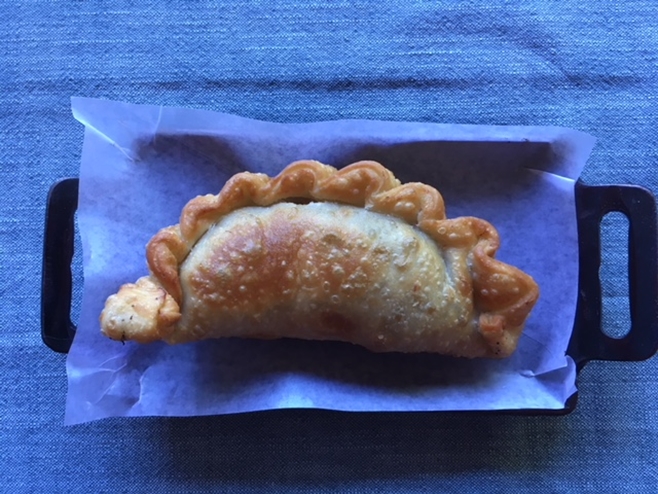The soft breeze ripples through the white tablecloth, stirring the pink flowers neatly embroidered on it a hundred years ago, maybe more. Under a tree at the bottom of the garden, a fire roars in the scorching Mendoza sun. We have come primarily to nose round this old house, dripping with history. But Pablo, resplendent in a crisp blue and white apron and his trademark Yorkshire flatcap beckons with golden fried empanadas, delectably filled with cheese. Now there’s fried cheese, and there’s 17th century fried cheese. My interest in architecture begins to wane with every mouthful.
Eduardo Soler, owner, restorer and storyteller drags us from the beguiling smells to see his work on his beloved house. Eduardo and his wife Emilia, an almost retired lawyer working her last case, bought La Cayetana from the Videla family and are restoring it to its former splendour. In 1561, the Spanish King, not satisfied with Peru and Chile, had sent a handful of his men across the Andes to settle a new city called Mendoza. One of those settlers, Videla, built a house, which along with the rest of the city was destroyed in the great earthquake of 1861. The house was rebuilt by the family and stands now in Lujan, with several additions over the years, with its long verandas and bright airy rooms. Eduardo has just painted the exterior walls, but this is no ordinary coat of paint. A labour of love, Emilia and Eduardo are hand-painting the building to the original paint recipe. Over a glass of his exceptional Rhone style marsanne-roussanne , Eduardo explains that the ubiquitous casa rosadas, of which the most famous is in Buenos Aires of course, is pink because the proteins and fats that are needed to make adobe walls waterproof usually came from pigs blood. Luckily, today, Eduardo has substituted iron oxide for the blood, in deference to the occasional vegetarian who accidentally stumbles into Mendoza.
It was during the restoration of the library, now with a ceiling and some safely
functioning wiring, that Emilia found a raft of historical documents, one of which was an 18th century recipe book. Much of the cuisine Argentina is now famous for, is influenced by the huge wave of immigration at the turn of the 20th century. The recipes found by Eduardo and Emilia are pre-immigration, a Spanish book with perhaps a touch of Huarpe, the Indian settlements the Spanish found in Mendoza, the people responsible for the irrigation channels that still water the vineyards of Mendoza. Here you find the most exquisite empanadas – deriving from the Spanish verb empanar – to wrap or coat with bread. Many of the recipes are fish, rarely seen in Mendoza these days, harking back to a time before the river was dammed, and a network of lagoons teemed with fish.
We head back to the inviting table, now laden with homemade focaccia and deep fried dough balls. One of Mendoza’s most talented chefs happens to have moved in next door, and Eduardo has enlisted him to work on recreating the ancient recipes for him. A chance encounter some years ago near Madrid with two winemakers who served up an exceptional Grenache led Eduardo to have a stab at a literal garage wine. As Pablo puts delicacy after delicacy after us, asparagus growing in the acequias, stewed wild cherries, tomatoes dressed with fresh basil, more empanadas, butternut squash roasted in ashes, a piquant salad of young mustard greens; Eduardo matches it with his ode to the Rhone valley, the Ver Sacrum line of wines. A beautifully light Grenache that does justice to this underrated ‘cinderella’ grape followed the complex and layered Marsanne-Roussanne. A classic Rhone GSM blend was offered up, and then, my favourite, a Mencia, (wine writer Tim Atkin says Mencia feels like a Tempranillo crossed with a Cab Franc) to accompany a perfectly cooked steak.
I asked Eduardo over an exquisite herbal infusion Pablo served up, what he wants to achieve with La Cayetana. A man who spent years climbing and guiding up the Aconcagua range, wants to create a place to relax and be peaceful, a place to think. His wines, the plates of food and the land the house stands on have one thing in common – minimum intervention. In time, he has plans for a pot still to make brandy and pisco, the house needs art and furniture and he plans to grow or rear on his land as much of the food as possible. For now, the roaring fire that cooked our lunch is dying in the early afternoon sun, and Pablo gets a well-earned rest and a glass of wine. I can’t wait to come back here and see the restoration complete. But mostly, I really want another 17th century fried cheese empanada.
Notes:
La Cayetana is open for lunch, Wednesday to Saturday, by reservation only. Email lacayetana1865@gmail.com Wines served are the house label, Ver Sacrum.

